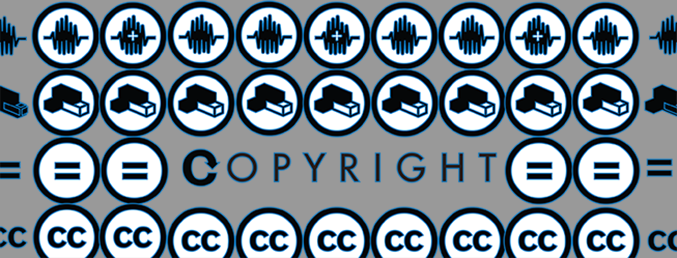
Copyright licensing on content is critical.
1. What is copyright?
-
Copyright gives the author of an original work rights over how that work is used. Rights cover publication, distribution and adaptation.
-
After a defined time (depending on national laws - usually the life of the author plus 50 years or more), the work enters the ‘public domain’ and anyone has the right to use it.
-
By default, copyright laws are set at ‘all rights reserved’. This means that no one has the right to do anything with this work without the explicit permission of the copyright holder, except where there are other laws which allow for 'fair use'.
2. Using other people's already-made content:
Check what copyright license has been used for any content you want to incorporate into your own. If this license states that you can use the content in the way you want to, or if the content is already in the public domain, you can use it. Otherwise, you need to ask permission. If you do not, you may have to withdraw your media from the public domain and you may even be found liable for breaching copyright law and have to pay compensation.
Watch this video, which creatively explains copyright and fair use (based on US law) using Disney movies: A Fair(y) Use Tale.
3. Comissioning content from other people
Be clear about copyright when you draw up the contract.
4. Producing your own content
Think about how you want other people and organisations to use the materials you create, and choose licenses for it accordingly.
5. Using Open Content licensing
When you are making human rights based materials, you probably want to give other people more freedom to use your content than the standard 'all rights reserved' copyright.
You may want people to:
- distribute and share your materials, to promote your cause more widely; or
- re-mix your content or adapt it for a local audience.
To do this, you can give your media 'Open Content' licenses. An Open Content license is defined as ‘some rights reserved’ or even ‘no rights reserved’. An Open Content license can make information and knowledge freely available. You should always license your work in a way which allows people to use it in the way you want it to be used.
There are several sorts of open content licenses that you can use, such as Free Art License, Common Documentation License, Open Audio License, Creative Commons License, Open Content and Open Publication License.
5.1 Creative Commons
- This is the most common Open Content licensing system used today. The Creative Commons website helps you to choose the license that's right for you.
- Creative Commons licensing has four key areas of copyright permissions that you can choose to 'give away' or keep:
- Attribution – Users must attribute your work in the way you have specified.
- Share-Alike – Users must license their own ‘derived work’ using the same sort of license you have used.
- No derivative works – The work may not be modified in any way.
- Non-commercial – The work may not be used for commercial purposes.
- You can use a mix of these license requirements to suit your needs.
- You can also define the ‘jurisdiction’ of your license, depending on the country you are in, so as to accommodate local copyright laws.
- To show you are using a Creative Commons license, you can use the Creative Commons logos. When you choose a license through the Creative Commons website, you are provided with a logo and HTML text so you can add the license information to your site.
Tactical Tech uses an 'Attribution Share-Alike Non-commercial' license for almost all of its content so that people can translate it, re-mix it, publish and distribute it freely, as long as they do so for non-commercial purposes and credit Tactical Tech. Read this guide for more details on how best to attribute Creative Commons-licensed content.
Source: Message-in-a-box